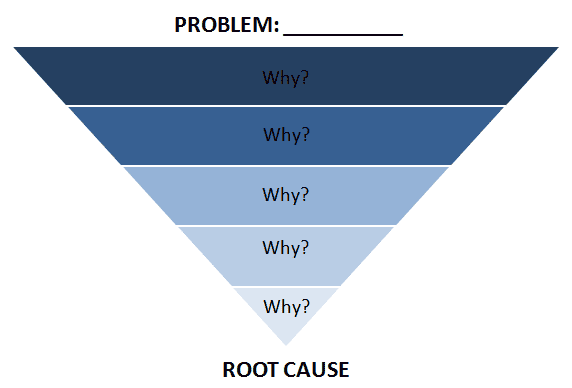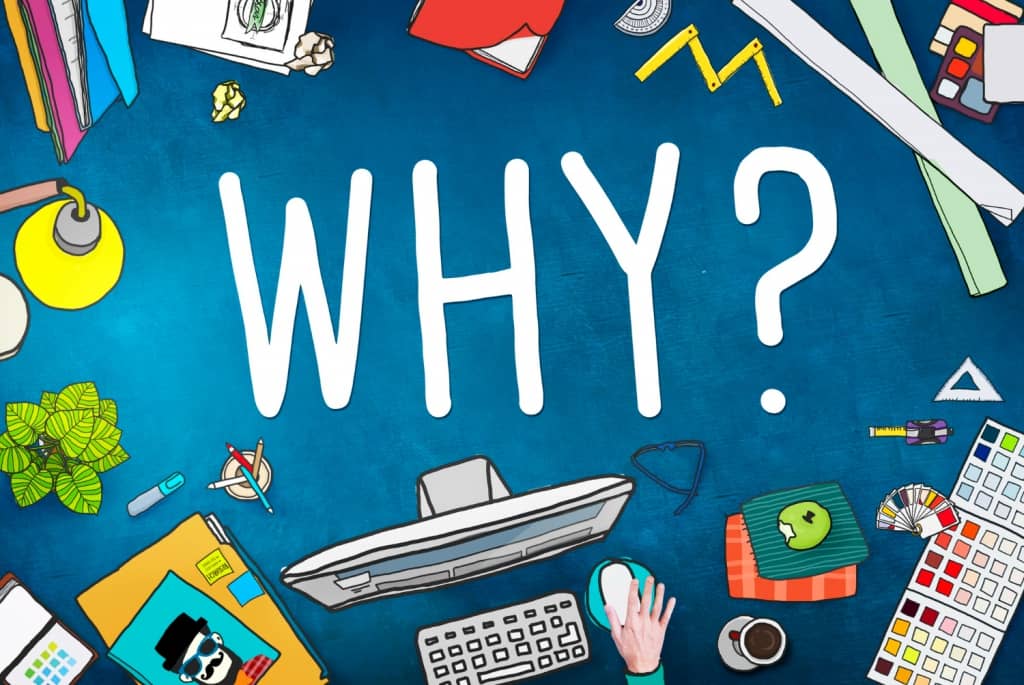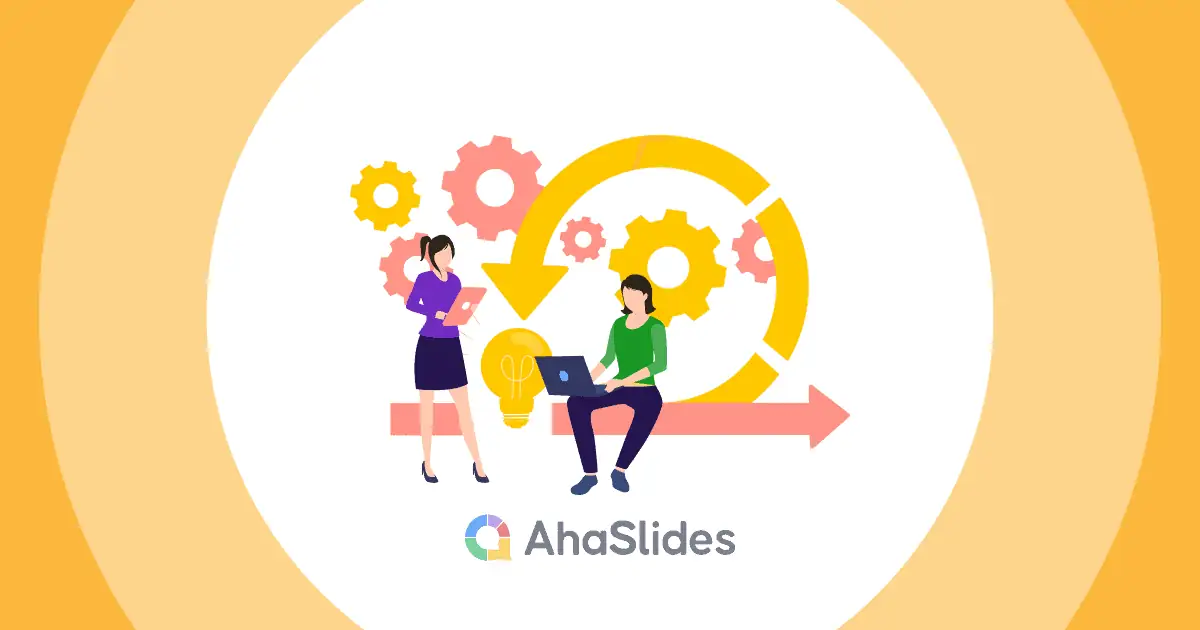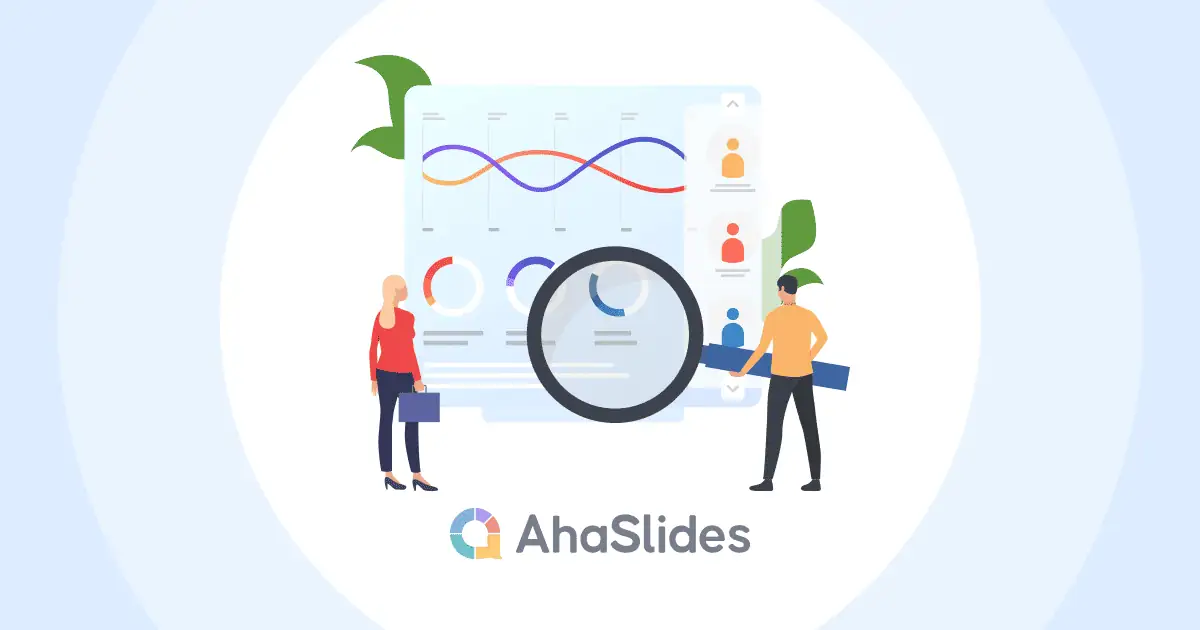अगर आपकी टीम लगातार किसी ऐसी समस्या से जूझ रही है जिसका समाधान करने से आप थक चुके हैं, तो शायद समय आ गया है कि आप गहराई से जांच करें और मूल कारण का पता लगाएं। यहीं पर फाइव व्हाय दृष्टिकोण काम आता है। इस ब्लॉग पोस्ट में, हम यह पता लगाएंगे कि पांच बार “क्यों” पूछकर संगठनात्मक जटिलताओं को कैसे सरल बनाया जाए।
विषय - सूची
- पांच क्यों दृष्टिकोण क्या है?
- पांच क्यों दृष्टिकोण के लाभ
- फाइव व्हाईज़ दृष्टिकोण को कैसे लागू करें
- पाँच क्यों उदाहरण
- एक सफल फाइव व्हाईज़ दृष्टिकोण अनुप्रयोग के लिए युक्तियाँ
- चाबी छीन लेना
- अक्सर पूछे जाने वाले प्रश्न
पांच क्यों दृष्टिकोण क्या है?

फाइव व्हाय दृष्टिकोण एक समस्या-समाधान तकनीक है जो संगठनों में समस्याओं के मूल कारण को उजागर करने के लिए गहराई से खोज करती है। इसमें पाँच बार “क्यों” पूछना शामिल है, समस्या की परतों को हटाकर उसके अंतर्निहित कारकों को उजागर करना।
यह विधि, जिसे 5 क्यों या 5 क्यों दृष्टिकोण के रूप में भी जाना जाता है, सतह-स्तरीय समाधानों से परे जाकर समस्याओं के गहन विश्लेषण को बढ़ावा देती है। अक्सर समस्या-समाधान और निर्णय लेने की प्रक्रियाओं में उपयोग किया जाता है, फाइव व्हाईज़ दृष्टिकोण संगठनों को आचरण करने में मदद करता है fIve-क्यों विश्लेषण, अधिक प्रभावी और टिकाऊ समाधानों को लागू करने के लिए चुनौतियों की वास्तविक उत्पत्ति की पहचान करना।
पांच क्यों दृष्टिकोण के लाभ
फाइव व्हाईज़ दृष्टिकोण कई लाभ प्रदान करता है, जो इसे प्रभावी समस्या-समाधान और मूल कारण विश्लेषण चाहने वाले संगठनों के लिए एक मूल्यवान तरीका बनाता है। यहां 5 व्हाईज़ पद्धति के कुछ प्रमुख लाभ दिए गए हैं:
1/ गहरे मूल कारण की पहचान:
फाइव व्हाय विधि किसी समस्या के पीछे के मूल कारणों को उजागर करने में बहुत कारगर है। बार-बार “क्यों” पूछकर, यह गहन जांच को मजबूर करता है, जिससे संगठनों को सतही लक्षणों से आगे बढ़कर मूल मुद्दों की पहचान करने में मदद मिलती है।
2/सरलता और पहुंच:
फाइव व्हाईज़ दृष्टिकोण की सरलता इसे संगठन के सभी स्तरों पर टीमों के लिए सुलभ बनाती है। किसी विशेष प्रशिक्षण या जटिल उपकरण की आवश्यकता नहीं है, जिससे यह समस्या-समाधान के लिए एक व्यावहारिक और सीधा तरीका बन जाता है।
3/ लागत प्रभावी:
अन्य समस्या-समाधान तकनीकों की तुलना में फाइव व्हाईज़ पद्धति को लागू करना लागत प्रभावी है। इसके लिए न्यूनतम संसाधनों की आवश्यकता होती है और इसे बुनियादी सुविधा के साथ संचालित किया जा सकता है, जिससे यह सीमित बजट वाले संगठनों के लिए एक कुशल विकल्प बन जाता है।
4/ उन्नत संचार:
कई बार “क्यों” पूछने की प्रक्रिया टीमों के भीतर खुले संचार को प्रोत्साहित करती है। यह सहयोग और समस्या की साझा समझ को बढ़ावा देता है, जिससे अधिक पारदर्शी और संवादात्मक कार्य वातावरण को बढ़ावा मिलता है।
5/ पुनरावृत्ति की रोकथाम:
किसी समस्या के मूल कारणों को संबोधित करके, फाइव व्हाईज़ विधि संगठनों को ऐसे समाधान विकसित करने में मदद करती है जो समस्या को दोबारा होने से रोकते हैं। यह सक्रिय दृष्टिकोण दीर्घकालिक समस्या समाधान में योगदान देता है और समग्र संगठनात्मक दक्षता को बढ़ाता है।
पांच क्यों दृष्टिकोण, या मूल कारण विश्लेषण की 5 क्यों विधि, अपनी सादगी, लागत-प्रभावशीलता और गहरे जड़ वाले मुद्दों की पहचान करने की क्षमता के लिए जानी जाती है, जो इसे निरंतर सुधार और समस्या समाधान के लिए प्रतिबद्ध संगठनों के लिए एक मूल्यवान उपकरण बनाती है।

फाइव व्हाईज़ दृष्टिकोण को कैसे लागू करें
यहां पांच क्यों दृष्टिकोण को लागू करने के बारे में चरण-दर-चरण मार्गदर्शिका दी गई है:
1/ समस्या की पहचान करें:
जिस समस्या का आप समाधान करना चाहते हैं उसे स्पष्ट रूप से परिभाषित करके प्रारंभ करें। सुनिश्चित करें कि समस्या विशिष्ट है और इसमें शामिल सभी लोग इसे अच्छी तरह से समझते हैं।
2/ पहला “क्यों” प्रश्न तैयार करें:
पूछें कि समस्या क्यों उत्पन्न हुई. टीम के सदस्यों को ऐसी प्रतिक्रियाएँ देने के लिए प्रोत्साहित करें जो समस्या के तात्कालिक कारणों का पता लगाएँ। यह जांच प्रक्रिया शुरू करता है।
3/ प्रत्येक उत्तर के लिए दोहराएँ:
प्रारंभिक “क्यों” प्रश्न के प्रत्येक उत्तर के लिए, फिर से “क्यों” पूछें। इस प्रक्रिया को बार-बार दोहराते रहें, आम तौर पर पाँच बार या जब तक आप उस बिंदु पर न पहुँच जाएँ जहाँ उत्तर किसी मूल कारण की ओर ले जाएँ। मुख्य बात सतही स्तर के स्पष्टीकरण से आगे जाना है।
4/ मूल कारण का विश्लेषण करें:
एक बार जब आप पाँच बार "क्यों" पूछ लेते हैं या किसी मूल कारण की पहचान कर लेते हैं जो टीम के साथ प्रतिध्वनित होता है, तो यह सुनिश्चित करने के लिए इसका विश्लेषण करें कि यह वास्तव में मूलभूत मुद्दा है। कभी-कभी, अतिरिक्त जांच या सत्यापन आवश्यक हो सकता है।
5/समाधान विकसित करें:
मूल कारण की पहचान करने के साथ, विचार-मंथन करें और ऐसे समाधान लागू करें जो सीधे इसका समाधान करें। इन समाधानों का लक्ष्य मूल कारण को खत्म करना या कम करना होना चाहिए, जिससे समस्या की पुनरावृत्ति को रोका जा सके।
6/ निगरानी और मूल्यांकन करें:
आइए हम अपने समाधानों को अमल में लाएँ और समय बीतने के साथ उनके प्रभाव पर कड़ी नज़र रखें। मूल्यांकन करें कि क्या समस्या हल हो गई है और क्या समाधानों में कोई समायोजन आवश्यक है।

पाँच क्यों उदाहरण
आइए फाइव व्हाय दृष्टिकोण के एक सरल उदाहरण के माध्यम से यह स्पष्ट करें कि यह कैसे काम करता है। एक परिदृश्य की कल्पना करें जहां आपकी मार्केटिंग टीम एक समस्या का सामना कर रही है: वेबसाइट ट्रैफ़िक में कमी
समस्या कथन: वेबसाइट ट्रैफ़िक कम हो गया
1. वेबसाइट ट्रैफिक क्यों कम हुआ?
- उत्तर: बाउंस रेट काफी बढ़ गया।
2. बाउंस रेट क्यों बढ़ा?
- उत्तर: आगंतुकों को वेबसाइट की सामग्री अप्रासंगिक लगी।
3. आगंतुकों को सामग्री अप्रासंगिक क्यों लगी?
- उत्तर: सामग्री लक्षित दर्शकों की वर्तमान आवश्यकताओं और प्राथमिकताओं के अनुरूप नहीं थी।
4. विषय-वस्तु दर्शकों की आवश्यकताओं और प्राथमिकताओं के अनुरूप क्यों नहीं थी?
- उत्तर: विपणन टीम ने ग्राहकों की बदलती प्राथमिकताओं को समझने के लिए हाल ही में बाजार अनुसंधान नहीं किया।
5. मार्केटिंग टीम ने हाल ही में बाजार अनुसंधान क्यों नहीं किया?
- उत्तर: सीमित संसाधनों और समय की कमी के कारण टीम की नियमित बाजार अनुसंधान करने की क्षमता में बाधा उत्पन्न हुई।
मूल कारण: वेबसाइट ट्रैफ़िक में कमी का मूल कारण सीमित संसाधनों और समय की कमी के रूप में पहचाना जाता है जो मार्केटिंग टीम को नियमित बाज़ार अनुसंधान करने से रोकता है।
उपाय: नियमित बाजार अनुसंधान के लिए समर्पित संसाधन आवंटित करें ताकि यह सुनिश्चित किया जा सके कि सामग्री लक्षित दर्शकों की बढ़ती जरूरतों और प्राथमिकताओं के अनुरूप हो।
इस मार्केटिंग उदाहरण में:
- प्रारंभिक समस्या वेबसाइट ट्रैफ़िक में कमी थी।
- पांच बार "क्यों" पूछकर, टीम ने मूल कारण की पहचान की: सीमित संसाधन और समय की कमी के कारण नियमित बाजार अनुसंधान में बाधा उत्पन्न हो रही थी।
- समाधान में दर्शकों की प्राथमिकताओं के साथ सामग्री को बेहतर ढंग से संरेखित करने के लिए नियमित बाजार अनुसंधान के लिए विशेष रूप से संसाधन आवंटित करके मूल कारण को संबोधित करना शामिल है।
एक सफल फाइव व्हाईज़ दृष्टिकोण अनुप्रयोग के लिए युक्तियाँ
- एक क्रॉस-फ़ंक्शनल टीम शामिल करें: समस्या पर विविध दृष्टिकोण प्राप्त करने के लिए विभिन्न विभागों या कार्यों से व्यक्तियों को इकट्ठा करें।
- खुले संचार को प्रोत्साहित करें: टीम के सदस्यों के लिए दोष के डर के बिना अपनी अंतर्दृष्टि साझा करने के लिए एक सुरक्षित स्थान बनाएं। प्रक्रिया की सहयोगात्मक प्रकृति पर जोर दें।
- प्रक्रिया का दस्तावेजीकरण करें: पूछे गए प्रश्नों और दिए गए उत्तरों सहित फाइव व्हाईज़ विश्लेषण का रिकॉर्ड रखें। यह दस्तावेज़ भविष्य में संदर्भ और सीखने के लिए मूल्यवान हो सकता है।
- आवश्यकतानुसार अनुकूलन करें: पाँच क्यों के अनुप्रयोग में लचीला रहें। यदि टीम पाँच बार “क्यों” पूछने से पहले मूल कारण की पहचान कर लेती है, तो अतिरिक्त प्रश्न पूछने की कोई आवश्यकता नहीं है।

चाबी छीन लेना
समस्या-समाधान की यात्रा में, पाँच क्यों दृष्टिकोण एक प्रकाशस्तंभ के रूप में उभरता है, जो संगठनों को उनकी चुनौतियों के मूल तक मार्गदर्शन करता है। बार-बार “क्यों” पूछकर, टीमें सतही मुद्दों की परतों को हटा सकती हैं, उन मूल कारणों को उजागर कर सकती हैं जिन पर ध्यान देने की आवश्यकता है।
फाइव व्हाईज़ दृष्टिकोण के अनुप्रयोग को बढ़ाने के लिए, का उपयोग करना अहास्लाइड्सयह इंटरैक्टिव प्रेजेंटेशन टूल प्रक्रिया के सहयोगी पहलू को सुव्यवस्थित कर सकता है, जिससे टीमें सामूहिक रूप से समस्याओं का विश्लेषण कर सकती हैं और समाधान खोजने की यात्रा में सहजता से योगदान दे सकती हैं। AhaSlides वास्तविक समय की बातचीत की सुविधा देता है, जिससे टीमों के लिए फाइव व्हाइज़ विश्लेषण एक गतिशील और आकर्षक अनुभव बन जाता है।
अक्सर पूछे जाने वाले प्रश्न
5 व्हाइज़ तकनीक क्या है?
फाइव व्हाय दृष्टिकोण एक समस्या-समाधान तकनीक है जो संगठनों में समस्याओं के मूल कारण को उजागर करने के लिए गहराई से खोज करती है। इसमें पाँच बार “क्यों” पूछना शामिल है, समस्या की परतों को हटाकर उसके अंतर्निहित कारकों को उजागर करना।
5 क्यों का सिद्धांत क्या है?
पांच क्यों का सिद्धांत इस विचार पर आधारित है कि बार-बार "क्यों" पूछने से, कार्य-कारण की गहरी परतों को उजागर किया जा सकता है, तथा सतही लक्षणों से आगे जाकर समस्या के मूल कारण की पहचान की जा सकती है।
5 क्यों शिक्षण रणनीति क्या है?
5 क्यों शिक्षण रणनीति में 5 क्यों पद्धति को एक शैक्षणिक उपकरण के रूप में उपयोग करना शामिल है। यह छात्रों को मूल कारण को समझने के लिए "क्यों" प्रश्नों की एक श्रृंखला पूछकर मुद्दों का विश्लेषण करने में मदद करता है।
रेफरी: व्यापार मानचित्र | माइंड टूल्स








